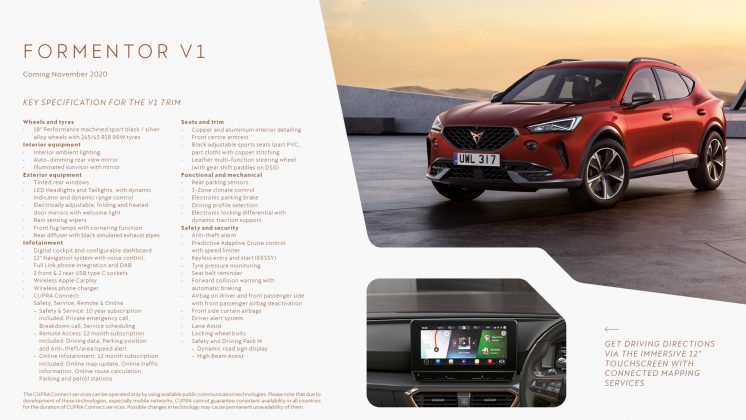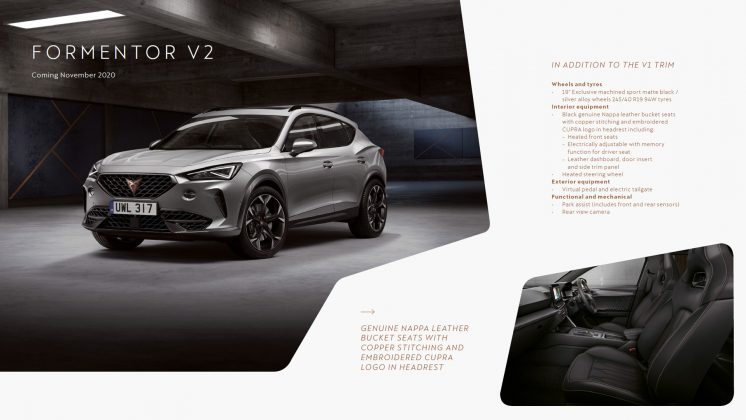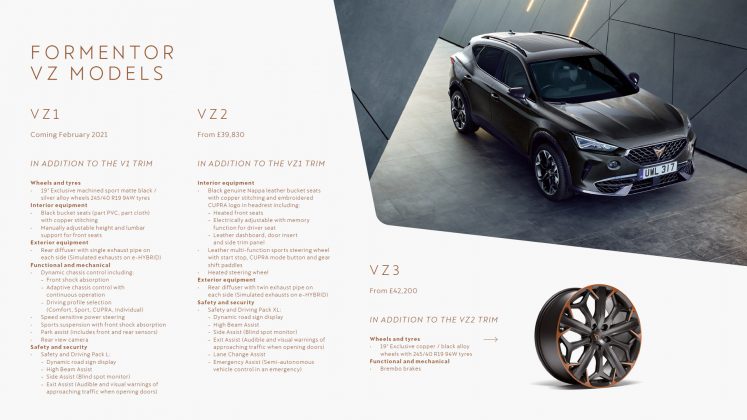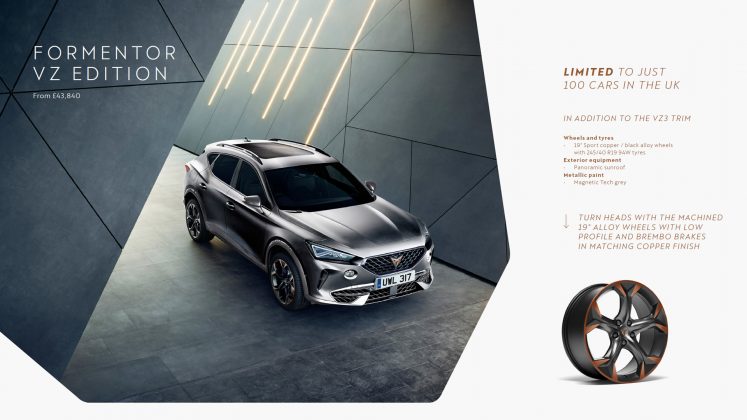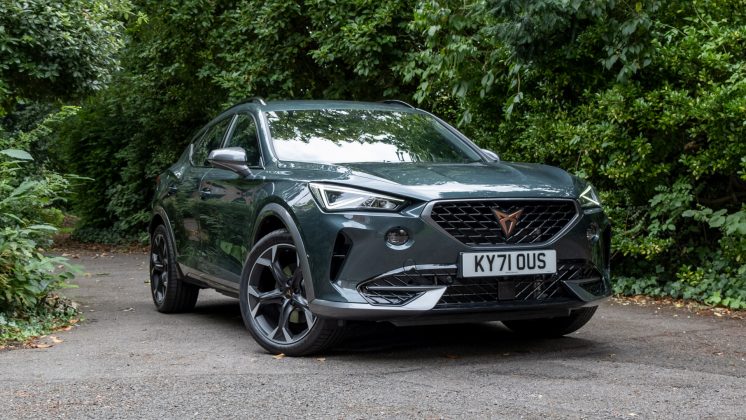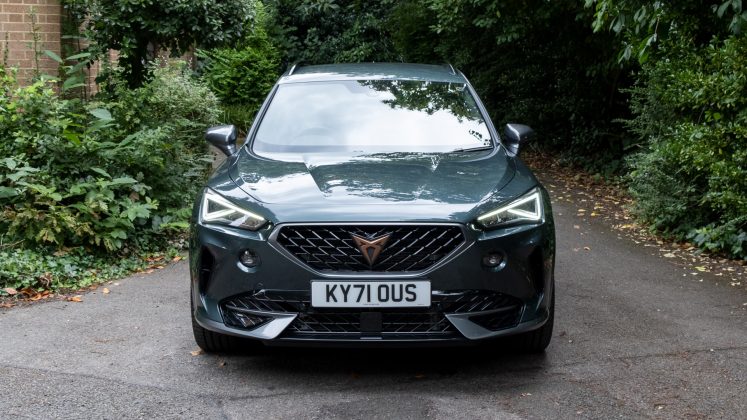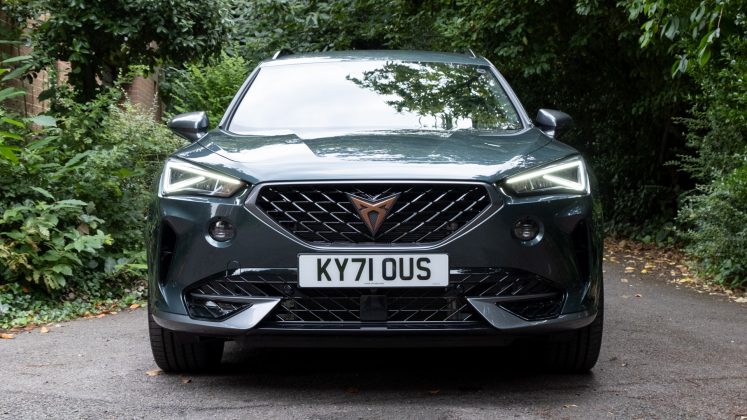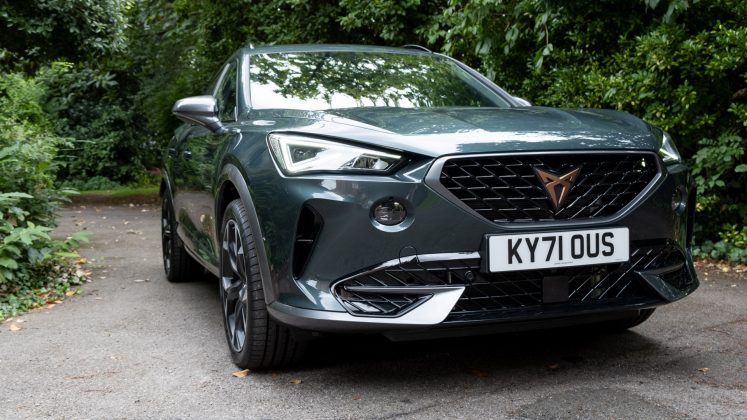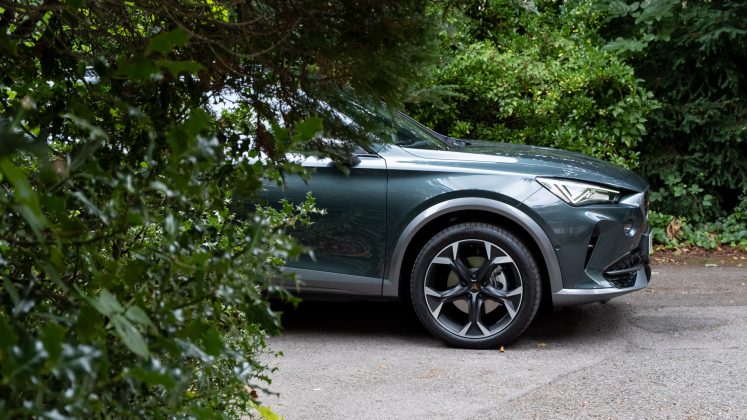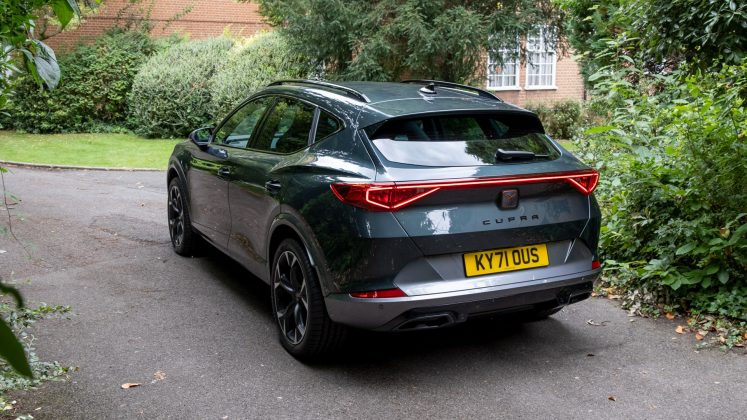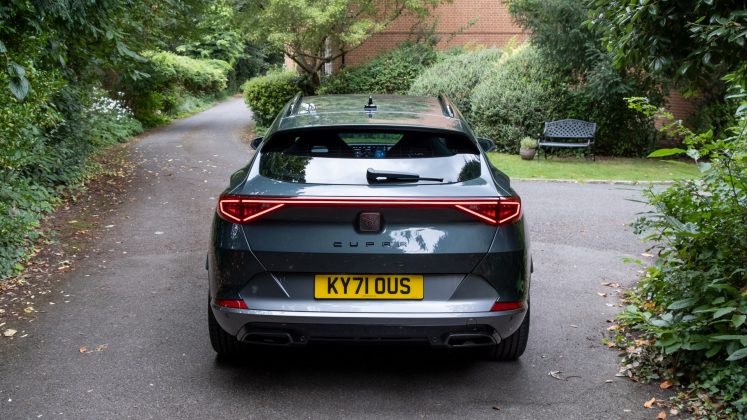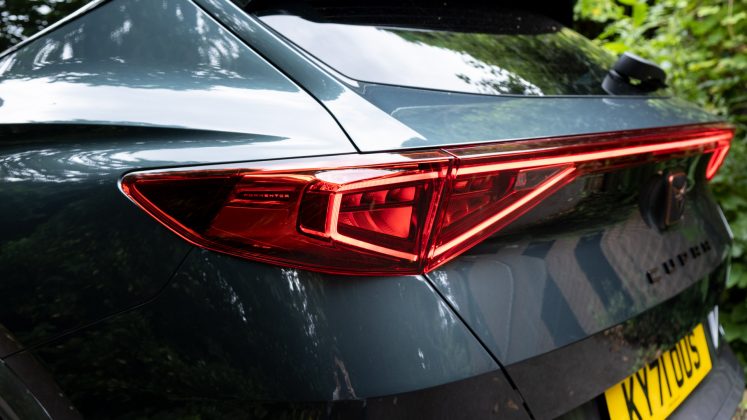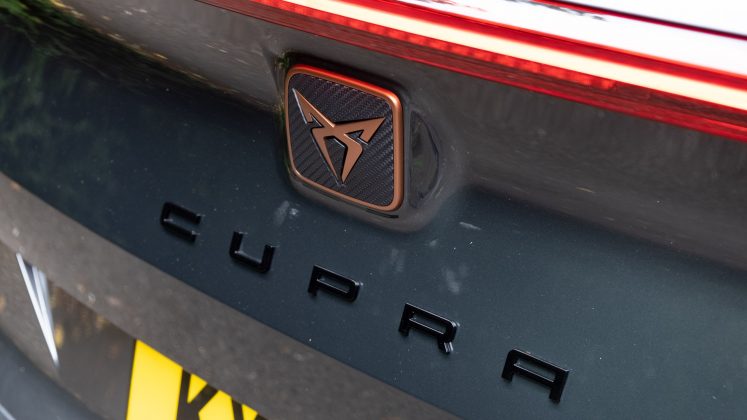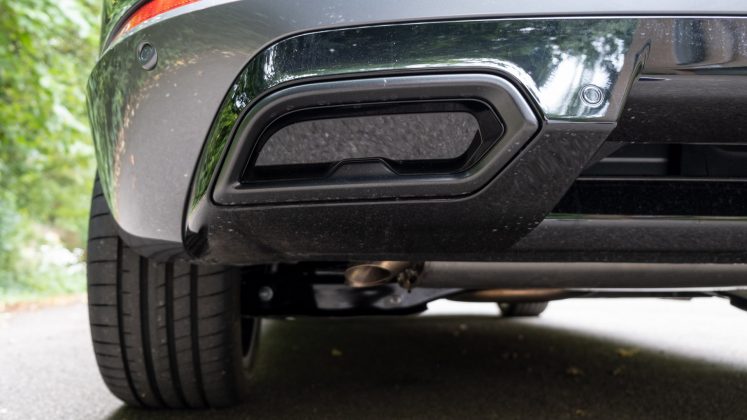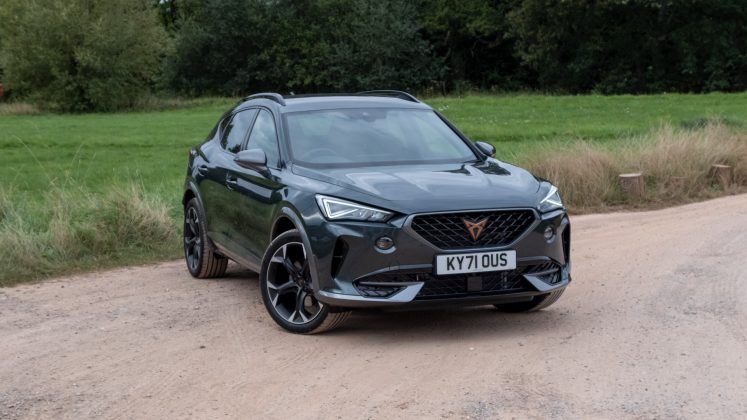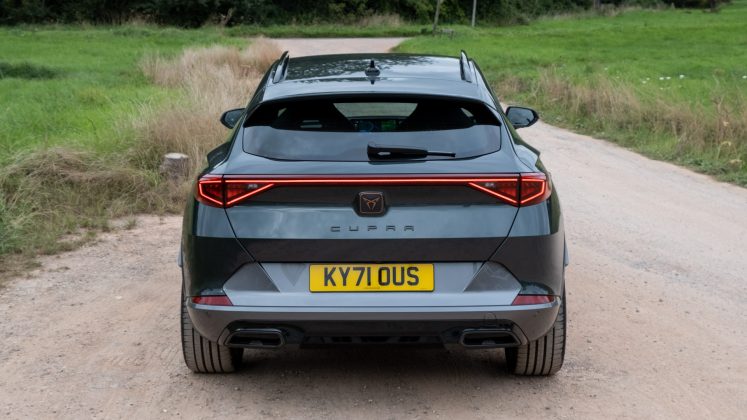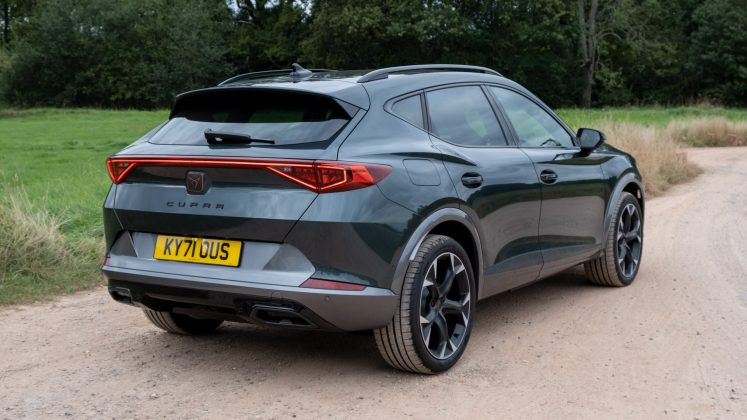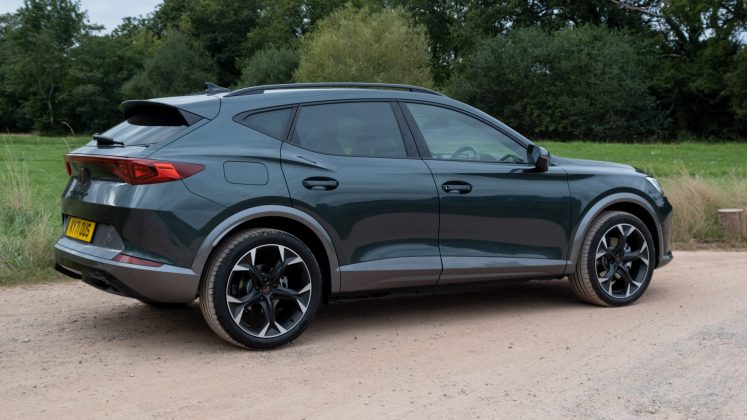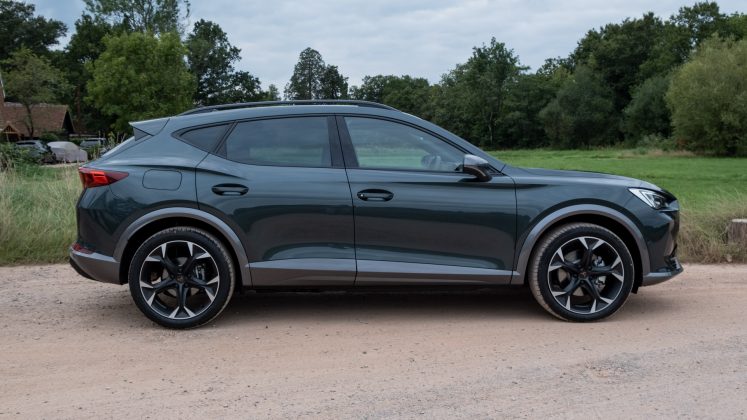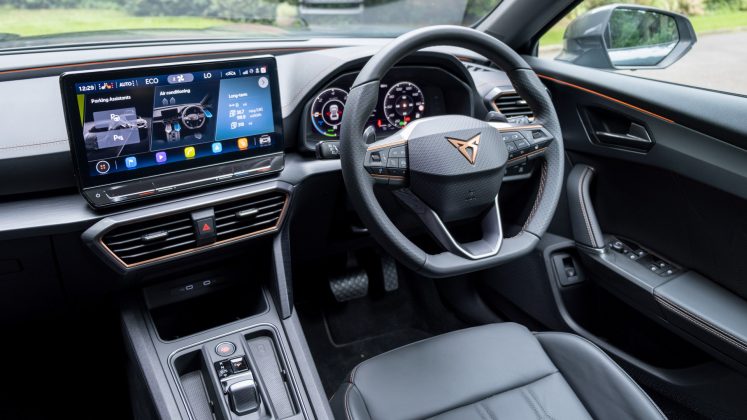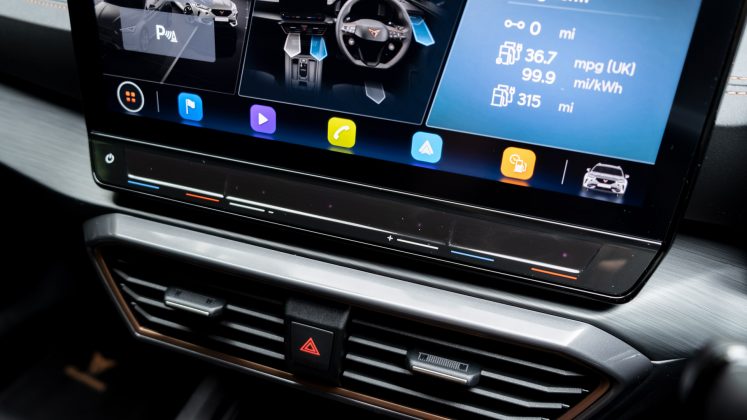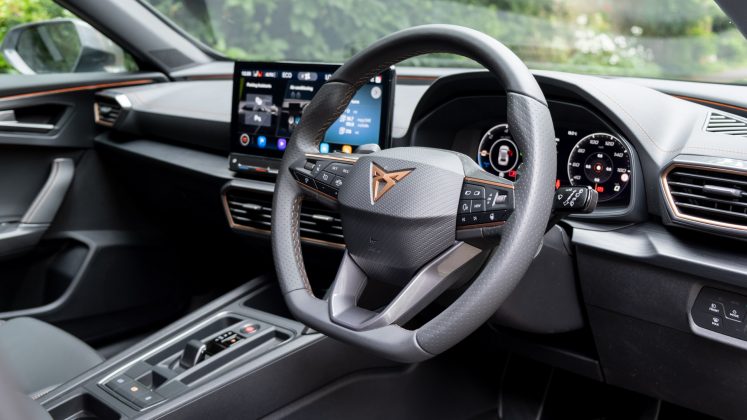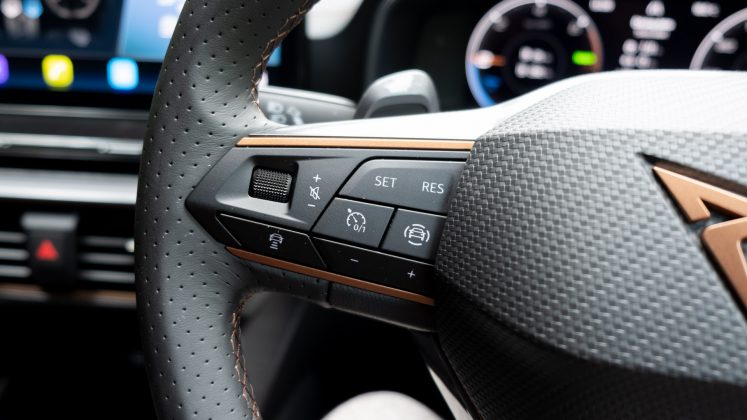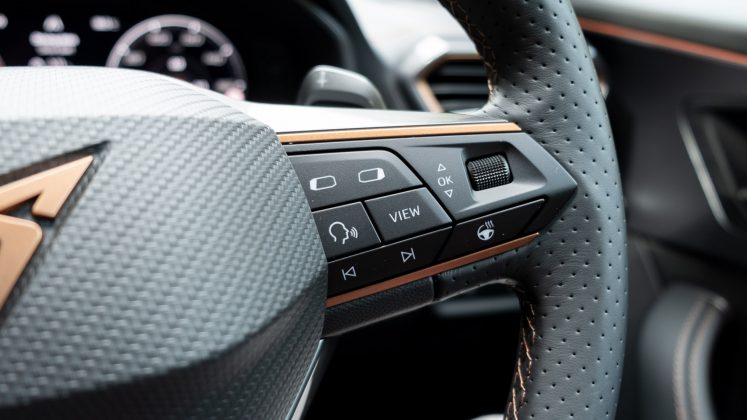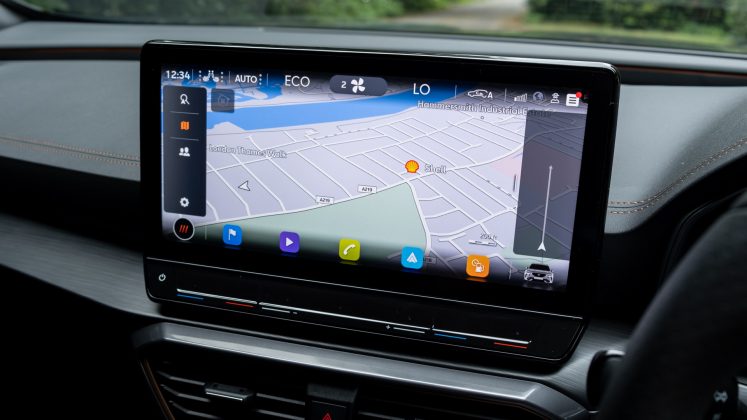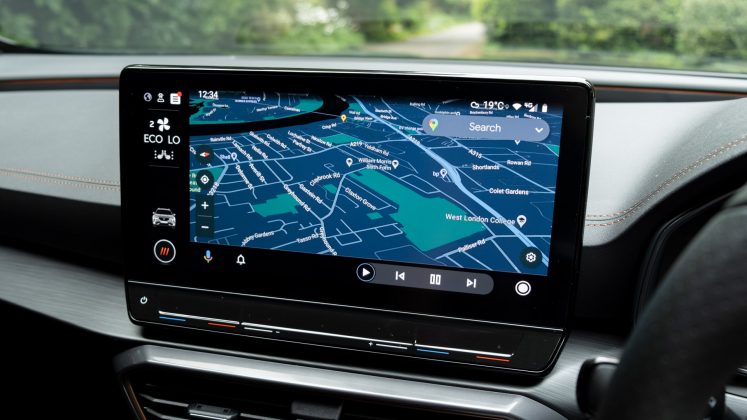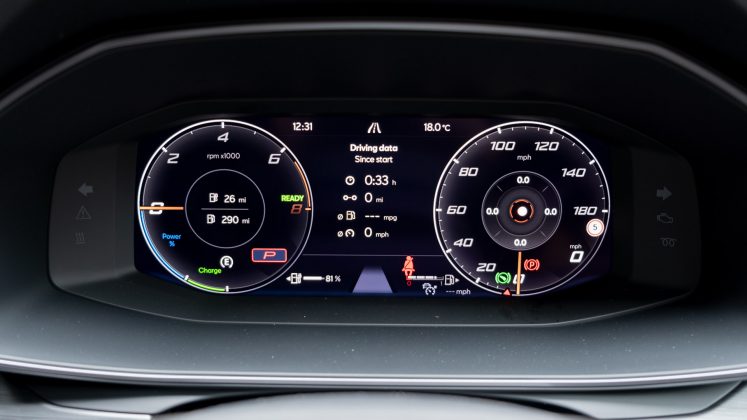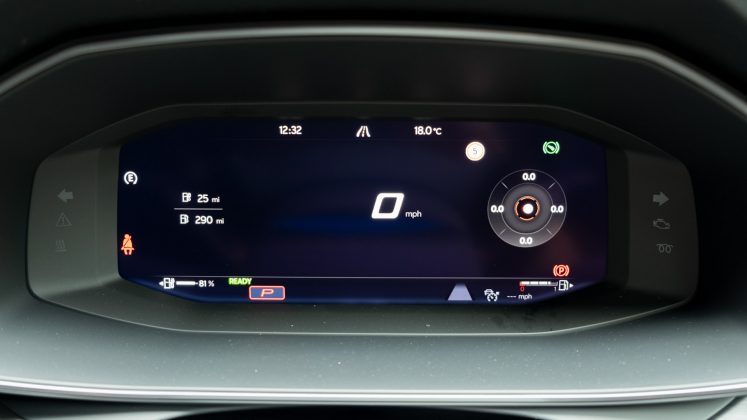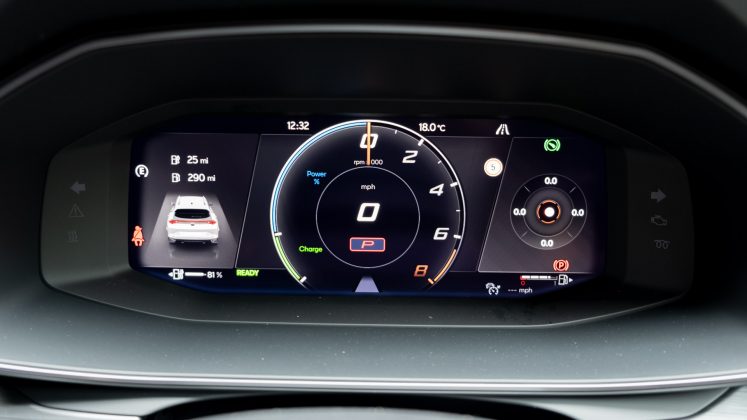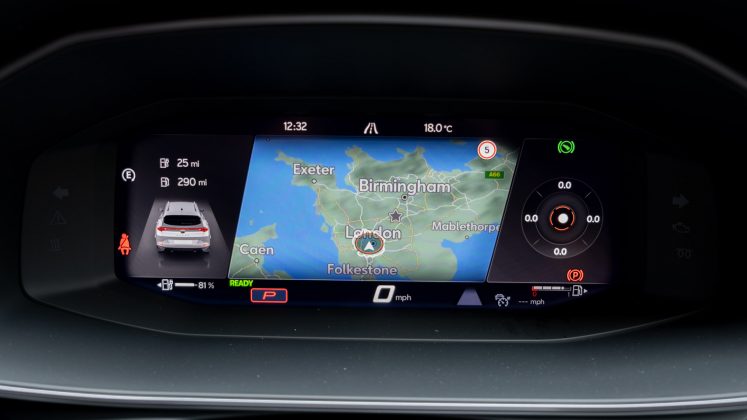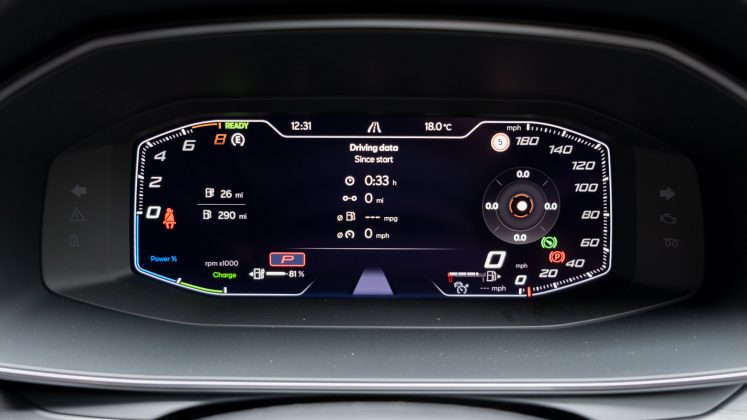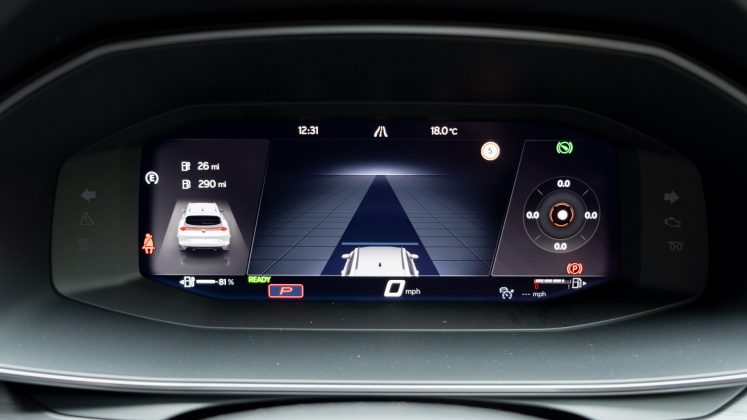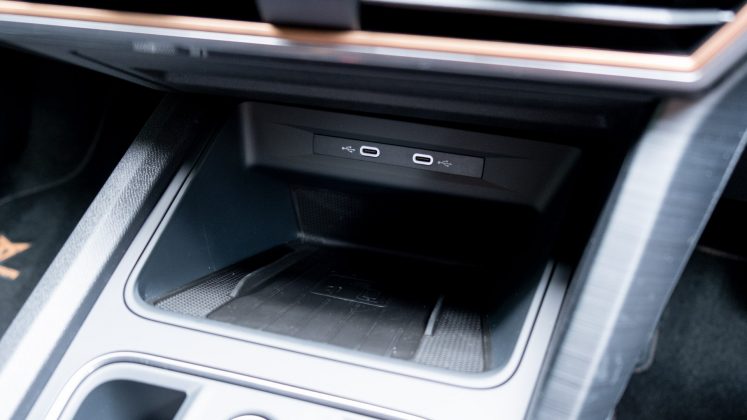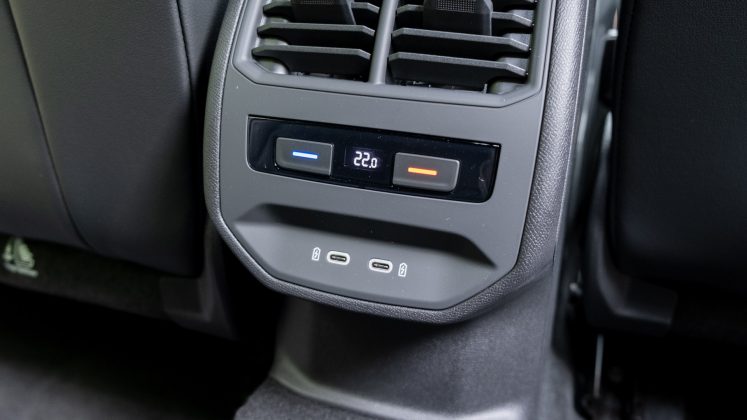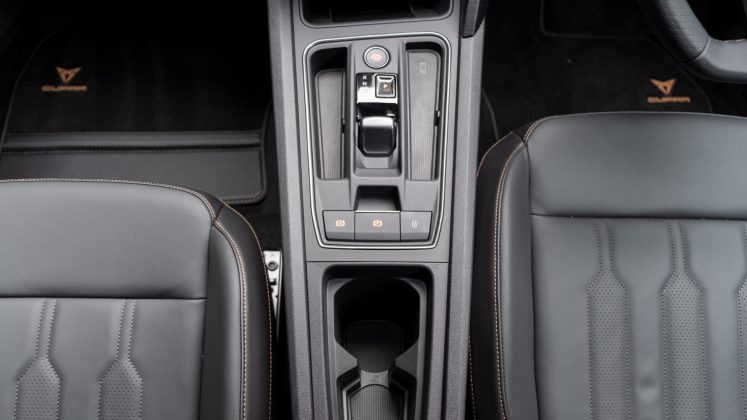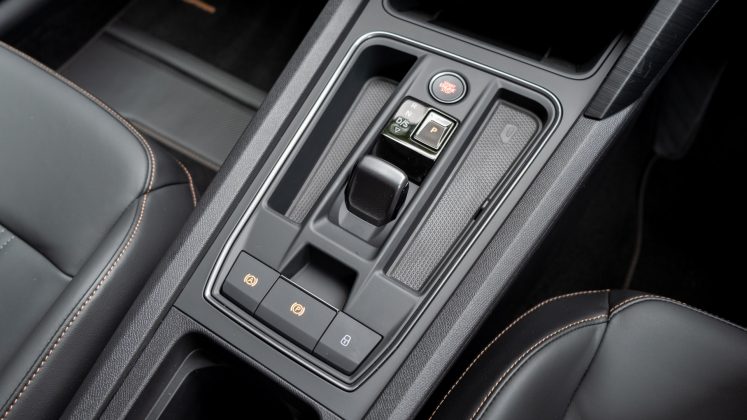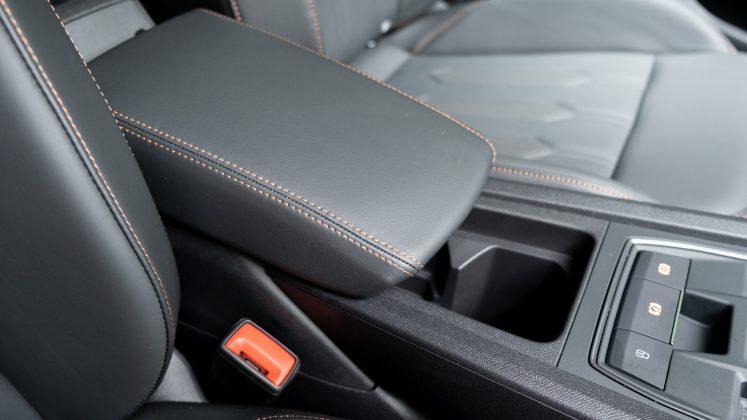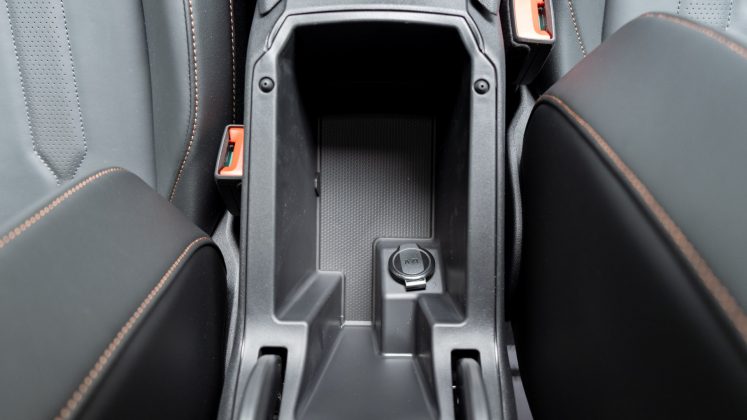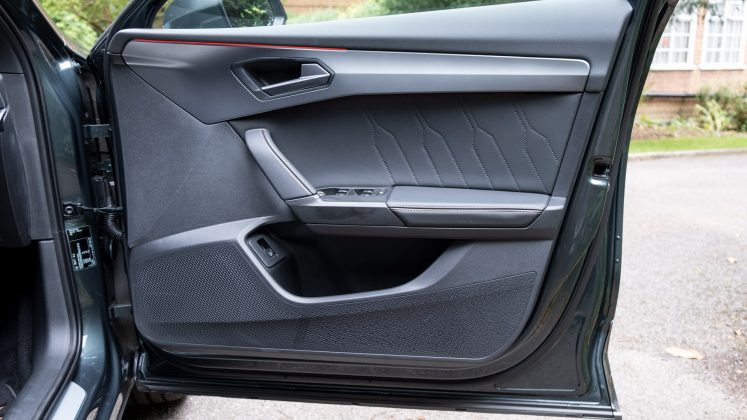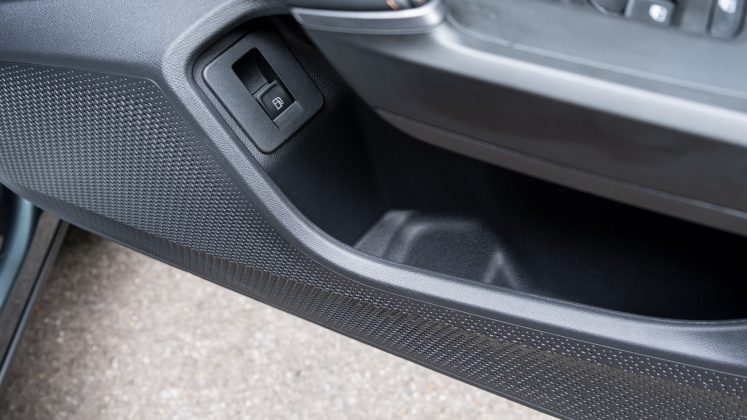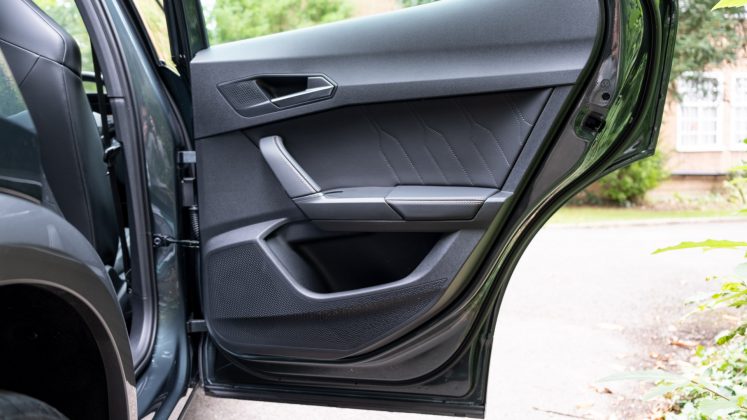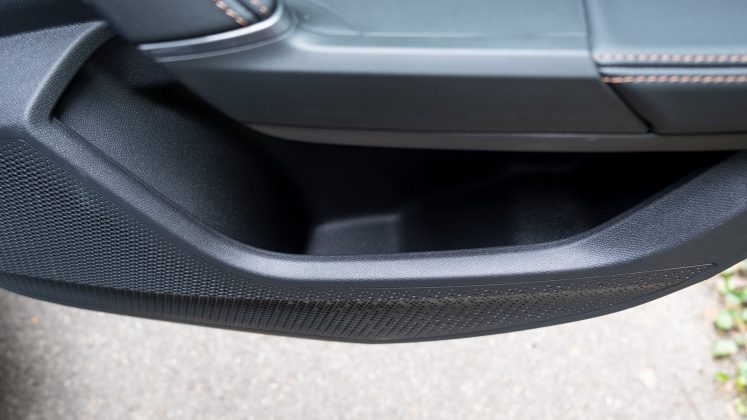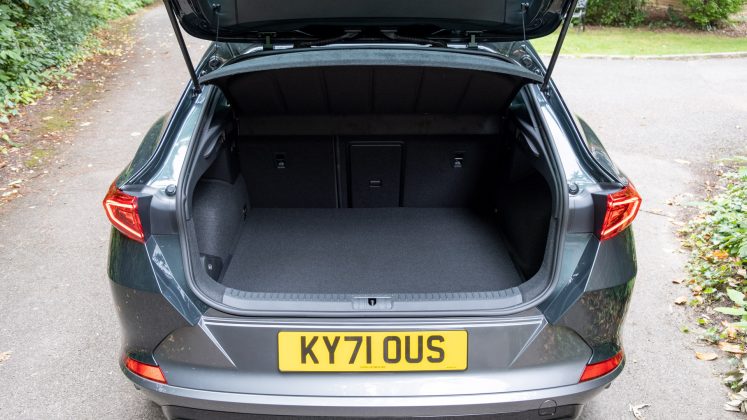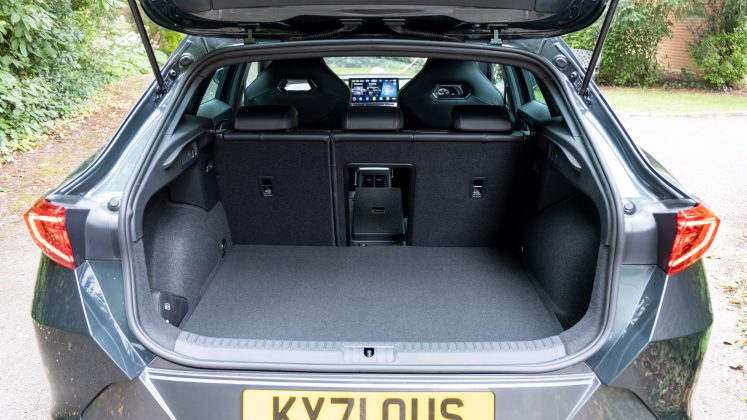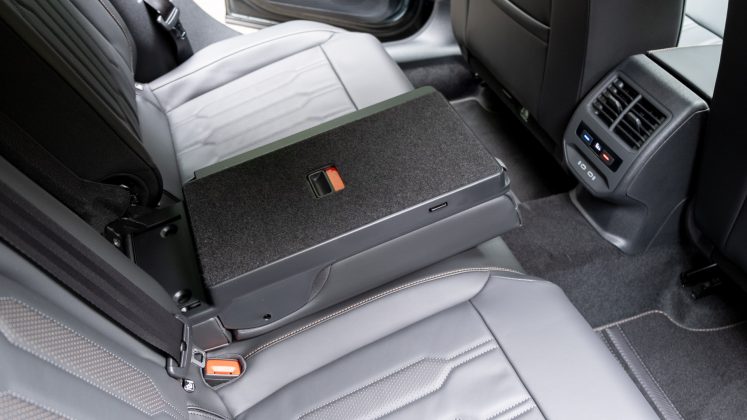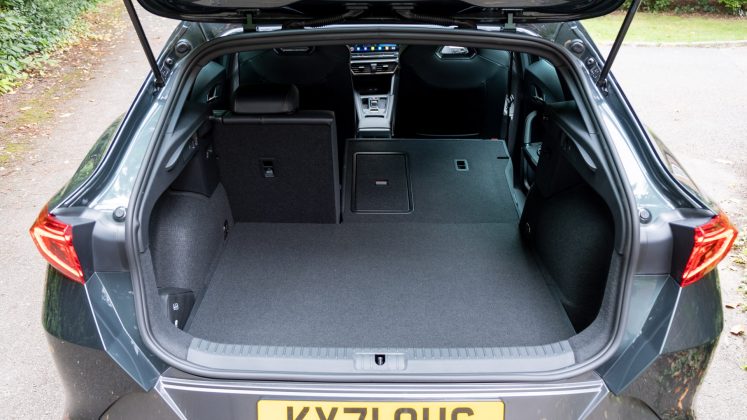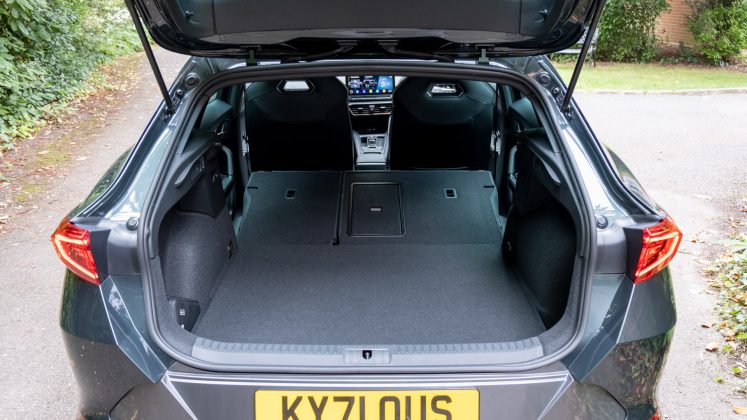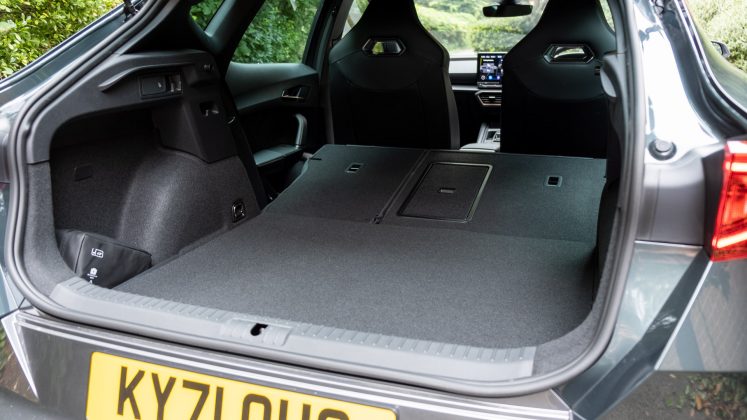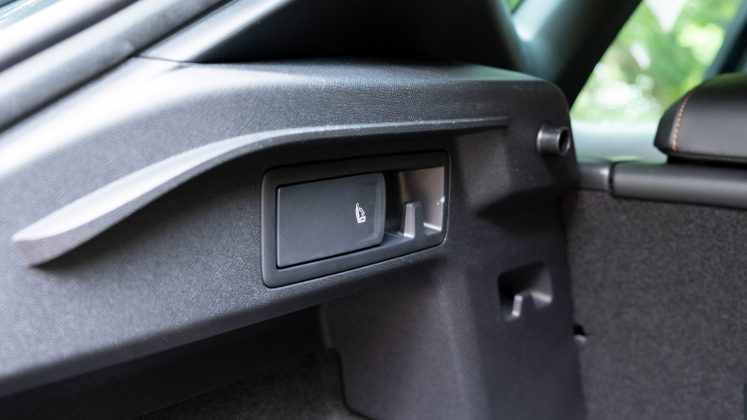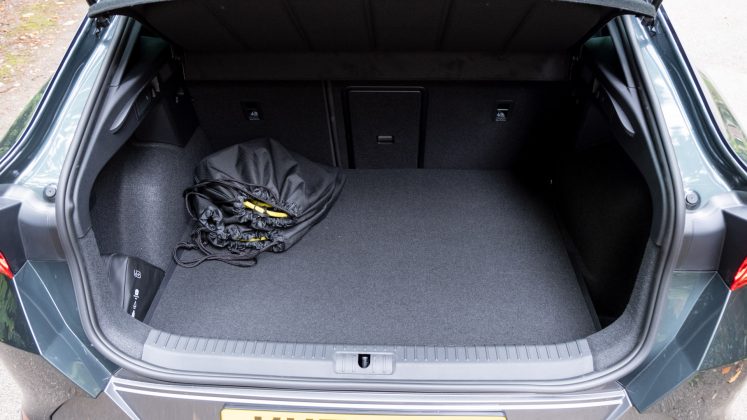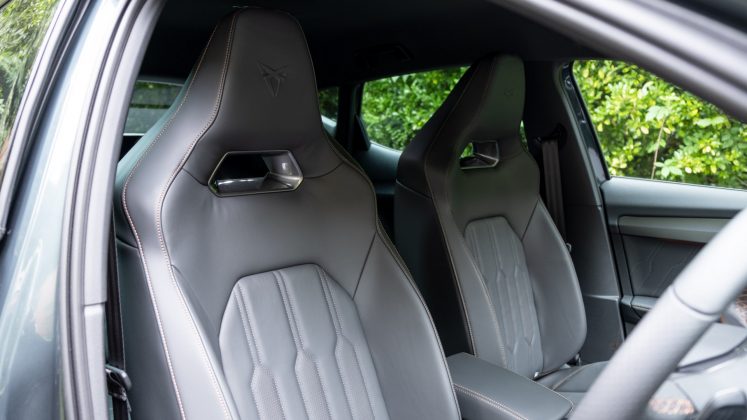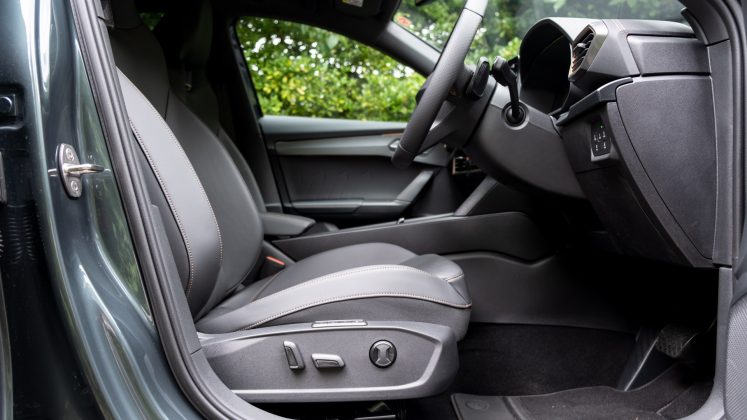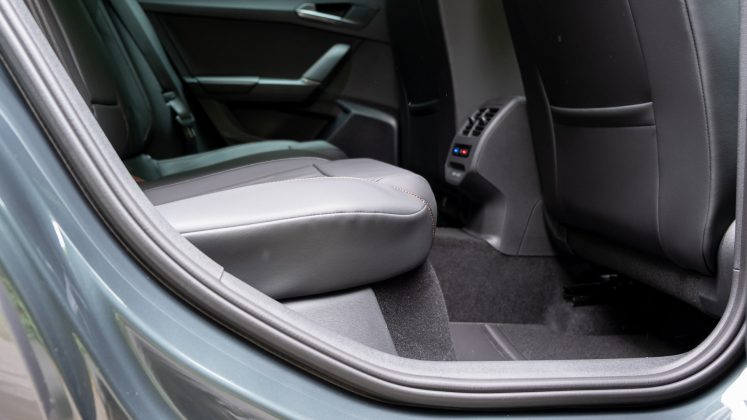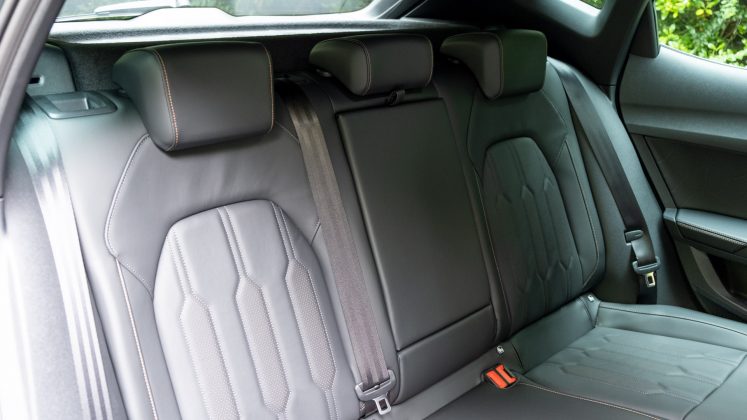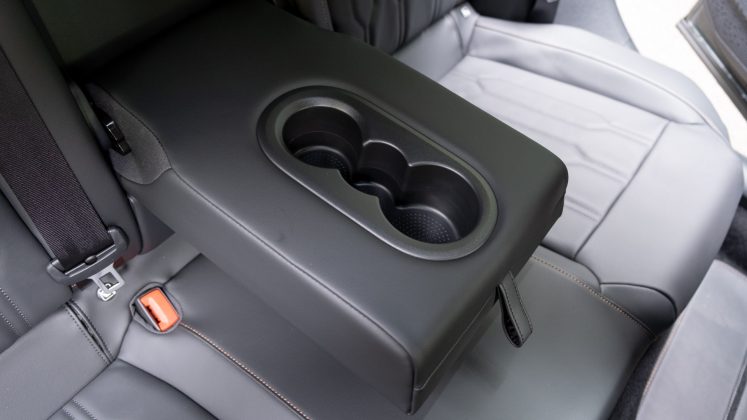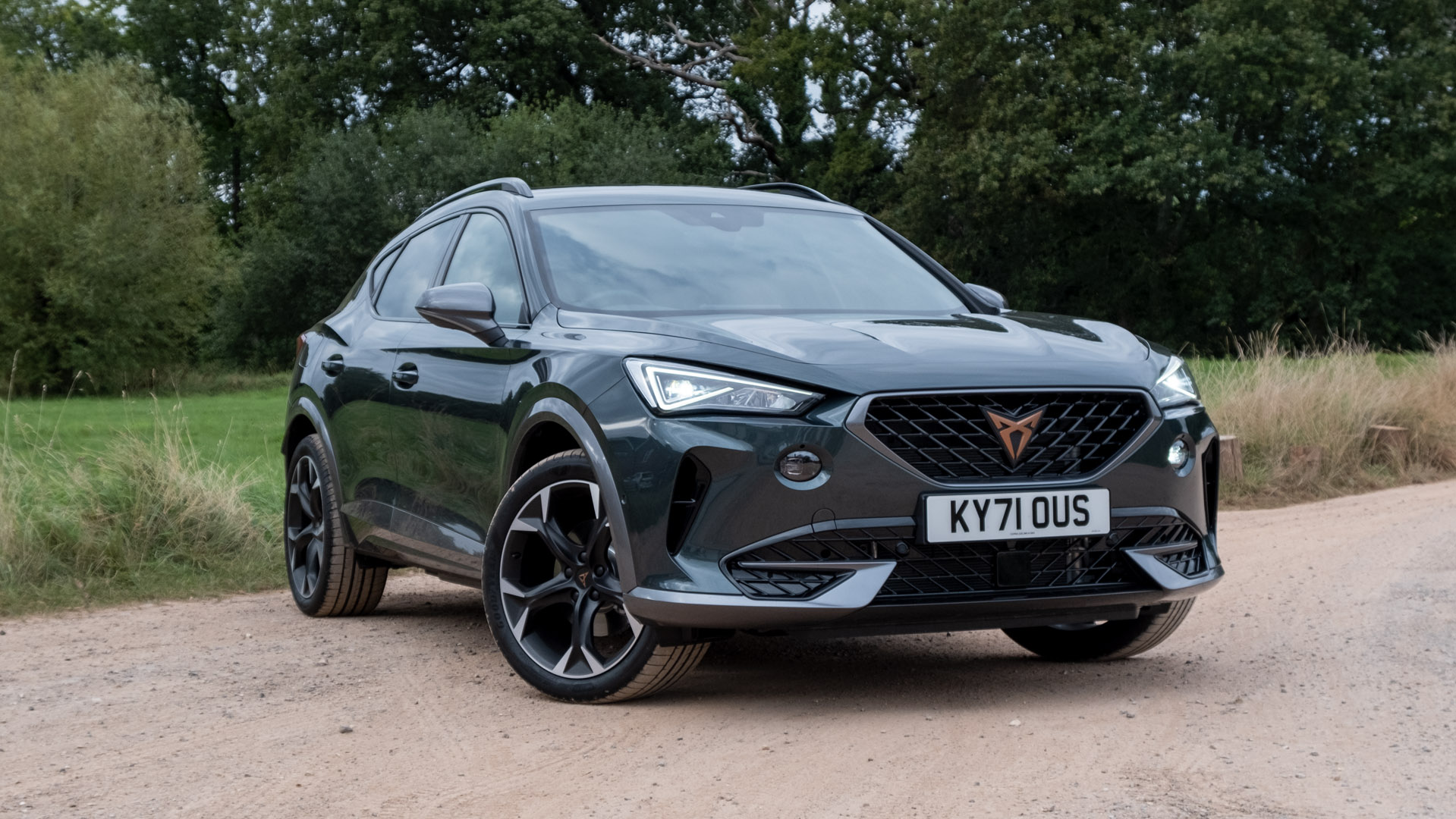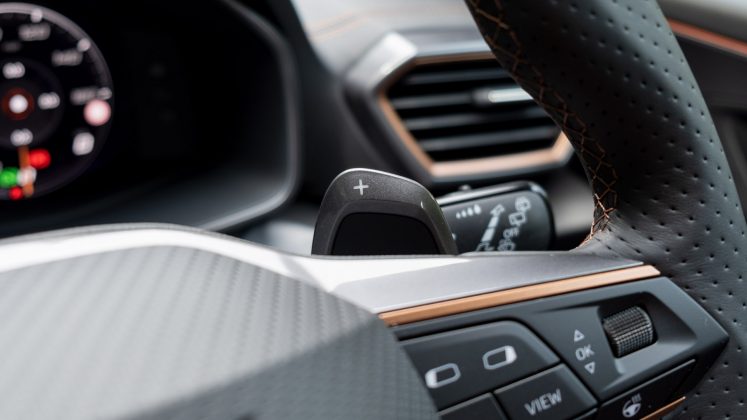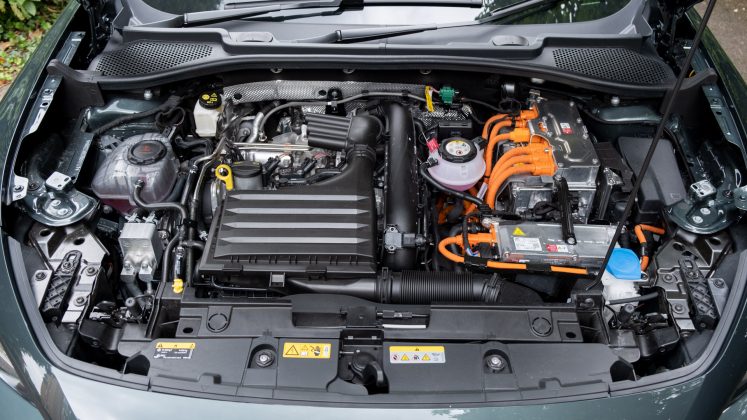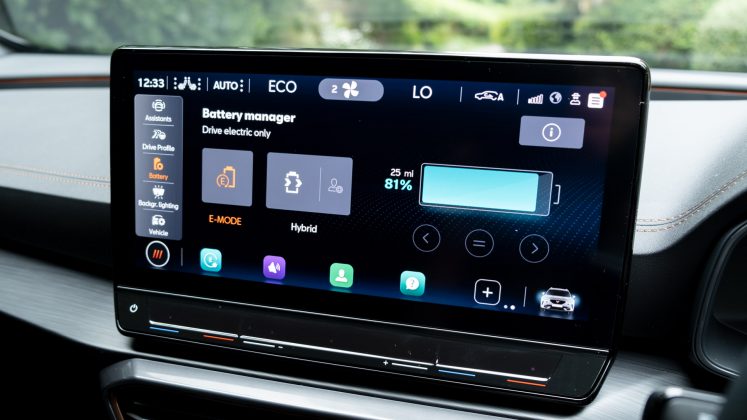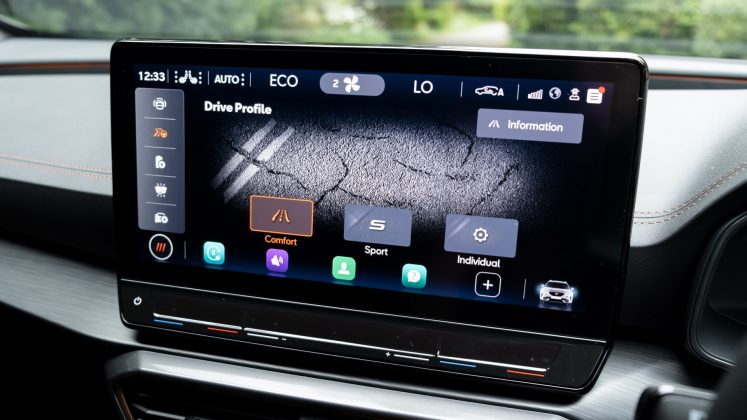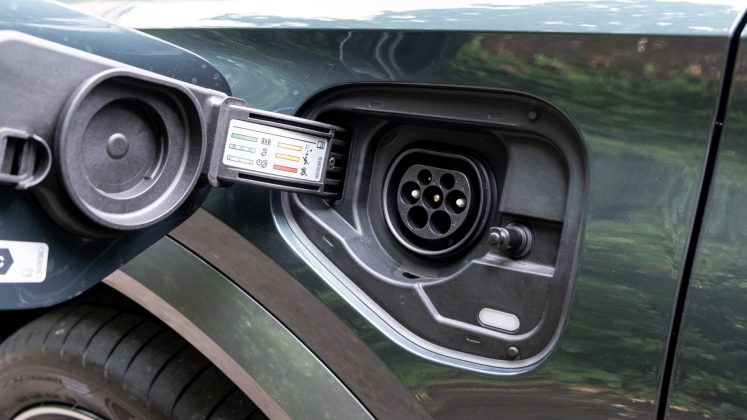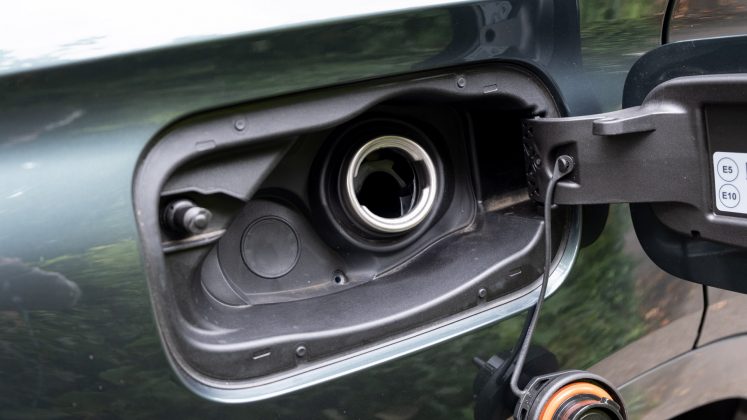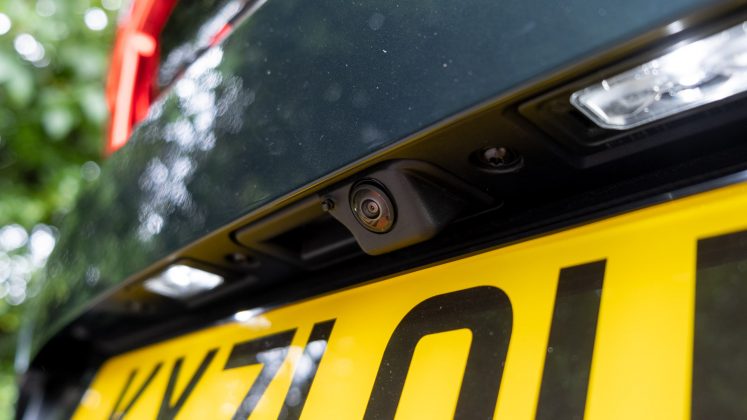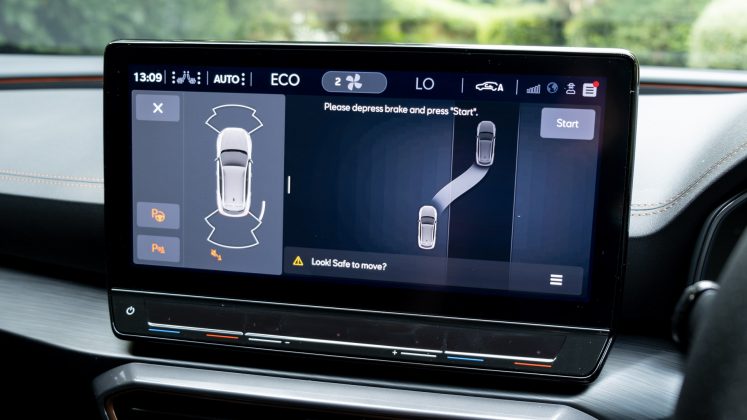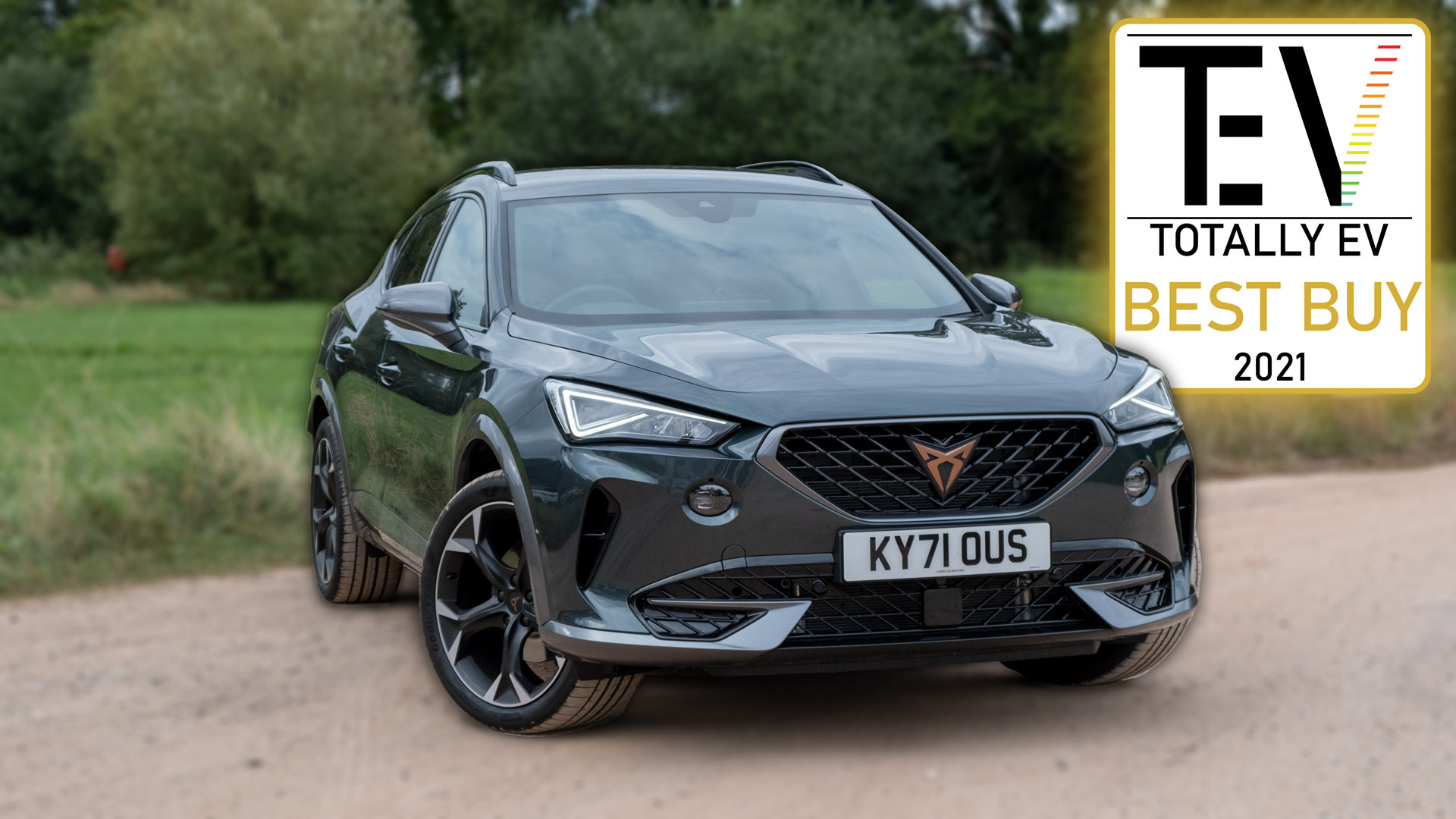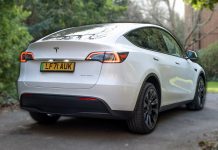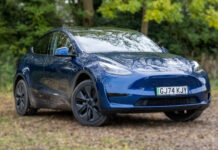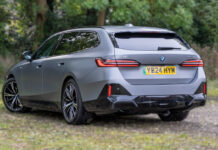For around three decades, Seat had a motorsport division, Seat Sport, wherein 2018 it got renamed to Cupra Racing. At the same time, it also became its own independent brand, Cupra; meaning vehicles would not only be sold under Seat’s umbrella but as a ‘Cupra’ too.
To differentiate itself from Seat or other vehicles offered by the Volkswagen Group, Cupra has adopted aggressive styling while also trying to preserve its sporty heritage. Keeping to its promise, the Cupra Formentor is a sporty SUV that takes its inspiration from the likes of the Seat Leon, Ateca, Terraco and the VW Golf R.
If you’d prefer to watch a review of the Cupra Formentor e-Hybrid, head on over to our YouTube channel.
Cupra Formentor e-Hybrid price & competition
In this review, we’ll be concentrating on the e-Hybrid model, which as the name suggests, is a plug-in hybrid; it starts from £36,170, marking an £8k premium over the base-level V1 TSI 150 that houses a manual gearbox, a 1.4-litre petrol engine, which can output 110 kW (148hp) of power and 250 Nm of torque. While the PHEV models (V1 and V2 trims) house the same engine, they also have an 85 kW motor that when combined with its petrol engine, outputs 150 kW (201hp) and 330 Nm of torque. Unsurprisingly, it also has a six-speed DSG gearbox rather than a manual transmission.
Should you want more power from the hybrid model, you’ll also find the VZ1 and VZ2 trims that have 180 kW (241hp) of power and 400 Nm of torque, instead.
Find the best Cupra Formentor deals
To give you a breakdown of the differences between each of the trim levels, see below (click to expand):
On review, we have the V2 e-Hybrid model that starts from £38,115. When it comes to competition, there is the BMW X2 xDrive 25e that starts from £39,390 (we reviewed the M Sport X variant that starts from £42,460); there’s also the slightly larger BMW X1 xDrive25e Sport to consider from £38,780. Elsewhere, you’ve got the Volvo XC40 Recharge (£39,130), Mercedes GLA 250 e (£39,995), Range Rover Evoque P300e PHEV (£43,850), and the Audi Q3 TFSIe (£38,335).
Read next: BMW 330e M Sport Touring first drive: The ultimate hybrid estate?
Cupra Formentor e-Hybrid exterior review
From the exterior, the Formentor certainly doesn’t disappoint; from its flared bonnet to the Cupra badge – everywhere you look, the SUV suggests a sporty design. Take, for example, its frontal design; the Spanish automaker has used sharp lines on the bumper and grilles to differentiate it from its Seat counterparts. However, there are a few similarities, whereby the headlights are identical to those found on the new Leon; that’s not a bad thing, however, as they’re supremely stylish.
The same could be said about its side profile, as the Formentor still opts for non-body coloured wheel arches and side skirts, similar to that of the Ateca for example; but unlike its sibling, the Cupra has painted parts instead, which seamlessly blend in with the rest of the vehicle’s design – the grey accents that are present on the front and rear bumpers seemingly extend around the vehicle. The 18” or 19” (pictured) alloys also provide that extra bit of sporty flair.
As for the rear, the taillight design is very Audi-esque, with the LED strip extending from one end of the boot to the other. Much like the headlights too, the paperclip design is similarly stylish. However, some might not appreciate the covered exhaust outlets. While the downward-facing exhaust does reduce pollution and prevents harmful fumes from easily entering the cabins of rear vehicles, purists might have preferred the automaker real outward-facing exhausts, rather than having to take the design with plastic inserts.
Onto the colour, it’s available as standard in a non-metallic White finish. Opt for the metallic Midnight Black, Nevada White, Asphalt Blue or Magnetic Tech Grey and it’ll set you back an additional £565. Premium metallic finishes are available too at an £810 premium: Desire Red, Graphene Grey, and the pictured Dark Camouflage, whilst the Magnetic Tech Grey Matte and Petrol Blue Matte finishes come in at a whopping £1,825.
Read next: Kia e-Niro review: The best all-electric SUV?
Cupra Formentor e-Hybrid interior review
Moving inside, the automaker has retained a sporty design with a carbon-like material lined around the cabin and gold accents that complete the vehicle’s look – it certainly is fitting and subjectively, we find it stylish.
However, when it comes to practicality there are signs of it being a Volkswagen Group vehicle, as much like the VW ID.3, ID.4, Skoda Enyaq iV and others, there’s a capacitive touch slider located right under the 12” infotainment system that’s used to adjust the climate controls and media volume. To us, it’s counter-intuitive as it requires faffing around with the display while driving; we suspect many would have preferred physical buttons, such as the ones found in the BMW X2 PHEV.
Read next: BMW X2 xDrive25e review: A sporty hybrid crossover
Thankfully, however, there are still physical buttons on the steering wheel itself, making it easier for the driver to interact with the car’s system and the 10.25” instrument cluster. Onto the subject of technology, the display itself is vivid, can be personalised thanks to a multitude of pre-set profiles and shows all the key information. However, it’s a shame that there’s no add a heads-up display, nor the option to add it onto any of the trim levels – a real shame as it would have made for a great addition.
As for the centre-weighted display, it supports both Android Auto and Apple CarPlay through a wired and wireless connection. The former can be achieved by plugging in a compatible smartphone via one of the two USB Type-C ports found toward the front of the centre console; a further two can be found at the rear of the cabin, too. Moving onto audio, the Formentor e-Hybrid houses six audio drivers within the cabin. If you’d like to hear how the stock system performs, watch our dedicated review of it on YouTube.
Cupra Formentor e-Hybrid storage review
When it comes to storage, the Cupra is well-versed. Starting at the front of cabin, there’s an angled Qi wireless smartphone charger at the front of the centre console. Further down, you’ll find two small storage bays for loose change that reside beside the electronic gear selector, and two cupholder spaces. Within the adjustable centre armrest, there’s a small compartment for a small-sized purse or wallet; here there’s also a 12V socket that provides extra charge or the ability to plug in a dashcam – find a list of our favourites, here.
As for the door bins, they are plenty large, whereby the front two will easily accommodate a 500ml bottle. Of course, there’s also the glove box should you wish to hide slightly larger valuables from prying eyes.
Despite its sizable interior storage, it’s the boot that might sway you to pick the Cupra over similar vehicles on the market. Indeed, it has 345 litres with the seats up and a rather spacious 1475 litres with them folded flat. While that’s around 100 litres less than its pure petrol sibling, it’s still plentiful. By comparison, the BMW X2 xDrive 25e offers 410 and 1,290 litres, instead.
It’s practical too, whereby the Formentor e-Hybrid has a flat loading bay (with a small boot lip), comes with 40:20:40 rear-folding seats with an integrated ski latch, and even rear seat release latches that make it easy to prop down them down from the rear of the vehicle.
Our only complaint, however, is that there is no underfloor compartment for your charging cables, which means you’ll to carry a bag in the boot should you wish to charge on-the-go. Elsewhere, an electronic tailgate doesn’t come fitted as standard in the V1 trim; you’ll need to get the V2 (or above) in order to have this feature included.
Read next: MG ZS EV review: An affordable all-electric SUV
Cupra Formentor e-Hybrid comfort review
Similarly, it’s a shame not to have electronically adjustable front seats as standard in the V1 or VZ1 trims. Instead, you’ll need to opt for the more expensive V2, VZ2 or VZ3 trims in order to have an electronic driver’s seat with memory function; these models also add heated front seats.
No matter which variant you opt for, however, you’ll find that headroom and legroom is excellent. Both at the front and rear of the cabin, 6-foot 2-inches (188cm) individual can fit with ease; a definite selling point over its BMW X2 rival. The Cupra also comfortably seats five occupants, where access to the front and rear of the cabin are painless. To further bolster rear occupant comfort, the Spanish automaker has included a retractable armrest that also houses two conveniently placed cupholders.
The vehicle’s cabin is also pretty well insulated, where it outperformed the BMW and also went toe-to-toe with more expensive Audis on the market – a detailed breakdown of the noise levels within the cabin can be found by reading our dedicated audio review.
Cupra Formentor e-Hybrid performance review
This brings us onto driving comfort. Here, the Formentor e-Hybrid has a stiffened suspension setup; that’s not overly surprising given it’s a sporty SUV. Granted, there’s some body roll and thus won’t compete with saloon-sized vehicles that remain a bit more planted to the ground, but in comparison to other SUVs on the market, it feels fun to drive around windy country roads.
That said, the BMW X2 still retains the crown when it comes to a driver’s feel. Indeed, the Cupra can’t quite compete with its German counterpart in this department, which provides that extra bit of connection with the road. Similarly, the Formentor operates a front-wheel-drive system only; and while this might suffice for a lot of consumers, it won’t provide the same level of grip as BMW’s xDrive all-wheel-drive vehicle, the X2 xDrive 25e.
Find the best Cupra Formentor deals
It’s much of the same that could be said about Cupra’s raw performance, where combined with its 1.4-litre TSI front-mounted engine and motor it outputs 150 kW (201hp) and 330 Nm of torque. By comparison, the equivalent BMW offers 162 kW (220hp) of power and 385 Nm of torque, which will get you to 60mph from a standstill in a tested 6.16 seconds. Still, the Cupra isn’t a slouch, where we had it tested using Racelogic’s Vbox Sport, at 6.9 seconds; top speed is limited to 127mph.
As for its gearbox, the six-speed DSG, yet again, can’t compete with BMW’s buttery smooth Steptronic transmission. Make no mistake, the Cupra shifts seamlessly through the gears when it’s in Sport mode, but fails to have that responsive feel when it’s in manual mode; one can flick through the gears using the flappy paddles found behind the steering wheel.
It might not be looking very positive for the Cupra, but we’re pitting it with the very best in the business, namely when it comes to driver’s feel and responsiveness; make no mistake, the Formentor e-Hybrid still packs a punch and will leave most with a smile on their face.
Read next: The best dash cams to mount inside your vehicle
Where the Cupra really shines, however, is in fuel efficiency. We netted a combined 64 MPG figure from its 40-litre fuel tank and battery pack combined, which far outclasses its BMW counterpart that achieves 39 MPG in the very same tests. Of course, one could attain more should you not deplete the respective battery packs, but given it’s a hybrid we suspect some might drive more than 20-30 miles each day. Indeed, here the Cupra achieves 29 miles from its 12.8 kWh battery pack, while the BMW around 25 miles – this is namely due to its smaller 10 kWh capacity. Note, on a full tank of fuel and battery, one could achieve roughly 430 miles without having to stop.
Now to recoup energy back into the battery pack, you can use regenerative braking, which oddly, is only available when initiating Sport mode – be it through the infotainment system or by down-shifting on the electronic gear selector by the centre console. Another means of activating it, is by setting the ACC to ‘Sport’ through the Individual drive mode selector and thus benefiting from a less sporty ride by leaving the rest of the options to ‘Comfort’.
Nevertheless, should you want to re-attain energy at a much faster rate, you’ll want to plug it into a charge point, where it’ll take 3hrs 33mins to get a full charge from empty using a public charger; a 3-pin socket will take a whopping five hours, instead. It’s rather disappointing that it’s limited to a 3.6 kW input, which means charge times are long for a vehicle that houses a relatively small battery pack. By comparison, the Citroen C5 Aircross Hybrid, has a 7 kW onboard charger (OBC), which allows the vehicle to recharge at a much faster rate.
Read next: Citroen C5 Aircross Hybrid review: A comfy and roomy PHEV
Cupra Formentor e-Hybrid safety review
Moving onto safety, the Formentor scored an impressive 5/5 stars on Euro NCAP’s rigorous crash tests; doing particularly well in the adult and child occupancy tests – 93% and 88%, respectively. As for its driver assistance systems, it features predictive adaptive cruise control, lane assist and dynamic road sign recognition among a few other safety features, come as standard.
Should you want blind-spot monitoring system with exit warning, you’ll need to opt for the VZ1 trim, while Lane Change Assist and Emergency Assist (semi-autonomous vehicle control) come in the VZ2 and VZ3 trims. Given the vehicle’s price, we’d have liked to have seen most of these features included as standard in the V1 trim, alas that’s not the case.
Similarly, when it comes to parking, rear sensors are in the V1 trim, only. Should you want front sensors (alongside Park Assist) and a rearview camera, you’ll need to get the V2 or above trims. Thankfully, however, visibility from within the cabin is excellent; both at the front and rear, it’s easy to see your surroundings.
Read next: Skoda Enyaq iV review: The Volkswagen ID.4 alternative
TotallyEV’s verdict on the Cupra Formentor e-Hybrid
On the whole, Cupra’s plug-in SUV is a stellar inclusion to the market. While it can’t quite compete with the BMW X2 xDrive25e when it comes to driving dynamics, it’s more spacious, significantly more fuel-efficient and comes in at a slightly lower asking price. Some, including ourselves, might argue that the Cupra Formentor e-Hybrid is the most complete sporty plug-in SUV on the market and as such, receives TottallyEV’s Best Buy award.
Find the best Cupra Formentor deals
Would you pick the Cupra Formentor over the BMW X2? Let us know in the comments section below or via social media; we’re on: YouTube, Instagram, Facebook, Twitter and LinkedIn.

